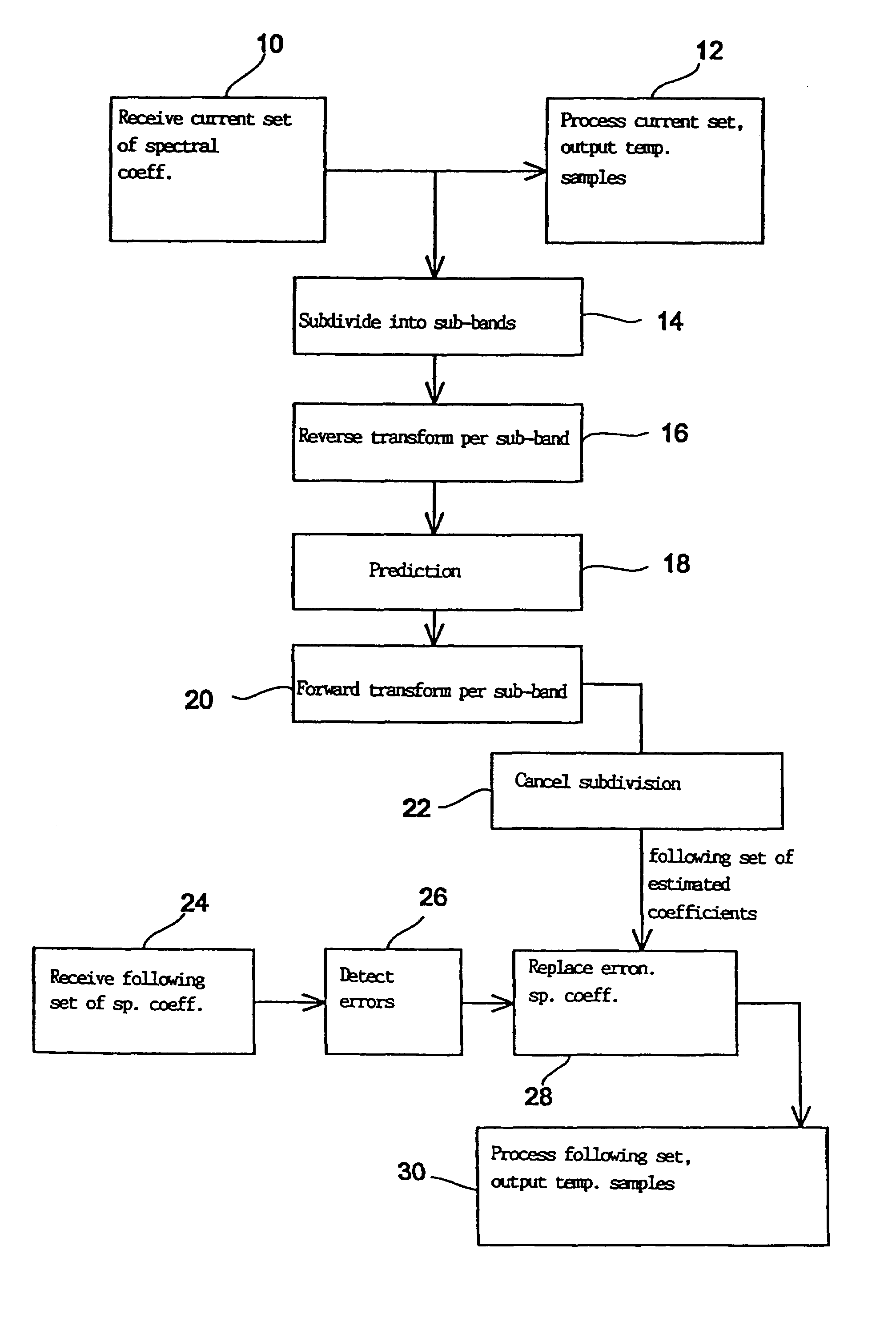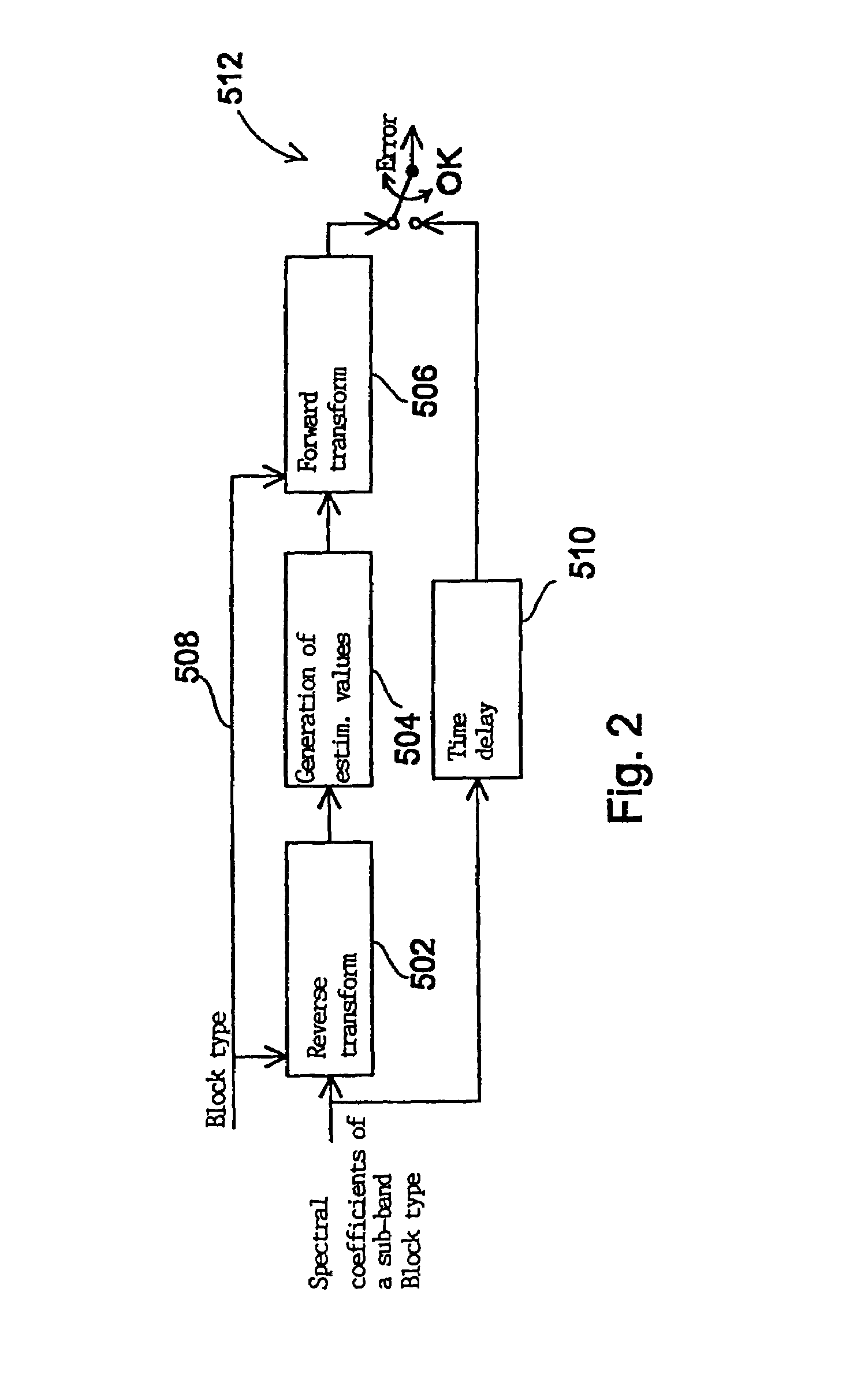Method and device for error concealment in an encoded audio-signal and method and device for decoding an encoded audio signal
a technology of error concealment and encoded audio, applied in the field of encoded audio signal decoding, can solve the problems of sudden rise in signal energy when the decoder issues error-free data again, adverse effects on the transmission of encoded audio signals, interrupting reproduction, etc., and achieve the effect of reducing computation effort and dependence on the transform algorithm used
- Summary
- Abstract
- Description
- Claims
- Application Information
AI Technical Summary
Benefits of technology
Problems solved by technology
Method used
Image
Examples
Embodiment Construction
[0034]FIG. 1 shows a block diagram of a decoder according to a preferred embodiment of the present invention. The decoder block diagram shown in FIG. 1 corresponds essentially to the MPEG-2 AAC decoder as defined in the standard MPEG-2 AAC 13818-7. The encoded audio signal is first fed into a bit stream demultiplexer 100 in order to separate spectral data and side information. The Huffman coded spectral coefficients are then fed into a Huffman decoder 200 so as to obtain quantized spectral values from the Huffman code words. The quantized spectral values are then fed into an inverse quantizer 300 and the respective scale factor bands are then multiplied by appropriate scale factors. The decoder according to the present invention can incorporate a plurality of additional functional units following the inverse quantizer 300, e.g. a middle / side stage, a predictor stage, a TNS stage, etc., as specified in the standard.
[0035]According to a preferred embodiment of the present invention th...
PUM
 Login to View More
Login to View More Abstract
Description
Claims
Application Information
 Login to View More
Login to View More - R&D
- Intellectual Property
- Life Sciences
- Materials
- Tech Scout
- Unparalleled Data Quality
- Higher Quality Content
- 60% Fewer Hallucinations
Browse by: Latest US Patents, China's latest patents, Technical Efficacy Thesaurus, Application Domain, Technology Topic, Popular Technical Reports.
© 2025 PatSnap. All rights reserved.Legal|Privacy policy|Modern Slavery Act Transparency Statement|Sitemap|About US| Contact US: help@patsnap.com



